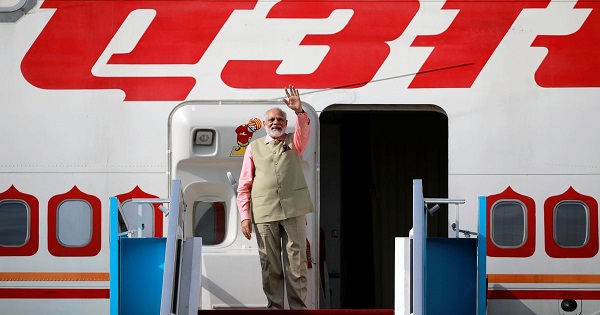PM Modi’s rising expenses
December 15, 2018 | Expert Insights

Prime Minister Narendra Modi’s hectic travel schedule and his government’s advertising blitz over the past four-and-a-half years have cost Indian taxpayers about 65.9 billion rupees ($920 million).
Background
Narendra Modi is an Indian politician serving as the 14th and current Prime Minister of India since 2014. He was the Chief Minister of Gujarat from 2001 to 2014 and is the Member of Parliament for Varanasi. Modi is a member of the Bharatiya Janata Party (BJP) and the Rashtriya Swayamsevak Sangh (RSS).
Modi led the BJP in the 2014 general election, which gave the party a majority in the Lok Sabha, the first time a single party had achieved this since 1984. Modi himself was elected to parliament from Varanasi. Since taking office, Modi's administration has tried to raise foreign direct investment in the Indian economy, increased spending on infrastructure, and reduced spending on healthcare and social welfare programmes.
Modi’s tenure as PM has been characterised by his frequent foreign trips across the world. He spent a considerable amount of time in his first two years on diplomatic visits to countries as varied from China to the US, with the objective of improving India’s standing in the international community. However, barring a few successful visits to China, Palestine and France, not all of his visits have had any measurable improvement in India’s bilateral or multilateral relations.
Analysis
The Indian Prime Minister, who was elected in 2014, has made 84 trips around the world cost roughly $280 million, while the government spent $640 million on promoting Modi’s flagship projects and achievements, according to new government data.
The money spent on each trip, combined with the cost of maintenance on Air India One and setting up a secure hotline, was provided in a response to a lawmaker’s question in parliament by V.K. Singh, the country’s junior foreign minister. The money on advertisements -- some of which bear Modi’s image -- was also made in parliament by Rajyavardhan Rathore, the junior minister for information and broadcasting.
Government spokesman Sitanshu Kar did not respond to three calls to his mobile phone on Friday, while a spokesman for India’s ruling Bharatiya Janata Party, G.V.L. Narasimha Rao, did not respond to a call and text for comment.
Since taking office, Modi has maintained a punishing pace of world travel, meeting some global leaders such as U.S. President Donald Trump and Japanese Prime Minister Shinzo Abe multiple times in a bid to boost India’s influence in global affairs and secure its strategic interests.
Some of his trips, including an informal summit with President Xi Jinping in the Chinese city of Wuhan, are credited as diplomatic successes. His meeting with China’s leader after a tense stand-off in the Himalayas was seen as ushering in a detente between the world’s two most populous countries.
Not all of his trips have been all-out diplomatic victories; some, like his 2016 trip to Japan which came immediately after Modi eliminated 86 per cent of India’s currency, sending millions into bank queues to exchange worthless cash -- led to accusations by the opposition that he was travelling the world while ordinary Indians were struggling.
It is safe to assume that PM Modi’s diplomatic visits have been largely hit-and-miss. He has signed a memorandum of understanding to open a yoga college in China’s Yunnan province and pledged to cooperate with Turkmenistan on both yoga and traditional Indian medicine, according to government statements.
These sorts of agreements -- aspirational, though sometimes vaguely-worded -- were signed with countries as varied as China and Palestine. In Oman, a memorandum of understanding was signed pledging "cooperation in the field of health." In Portugal, Modi’s diplomats promised to cooperate "in the exploration and uses of outer space for peaceful purposes," an agreement India also struck with Vietnam and Oman.
Assessment
Our assessment is that the rising expenses of a Prime Minister do not suit a country which still on the path to development. We believe that political parties can spend money on advertisements but they should not utilise the taxpayer’s money for party expenses. We also feel that the PM’s frequent foreign trips and the costs associated will be a point of interest for rival political parties in the upcoming General Elections in May 2019.








Comments